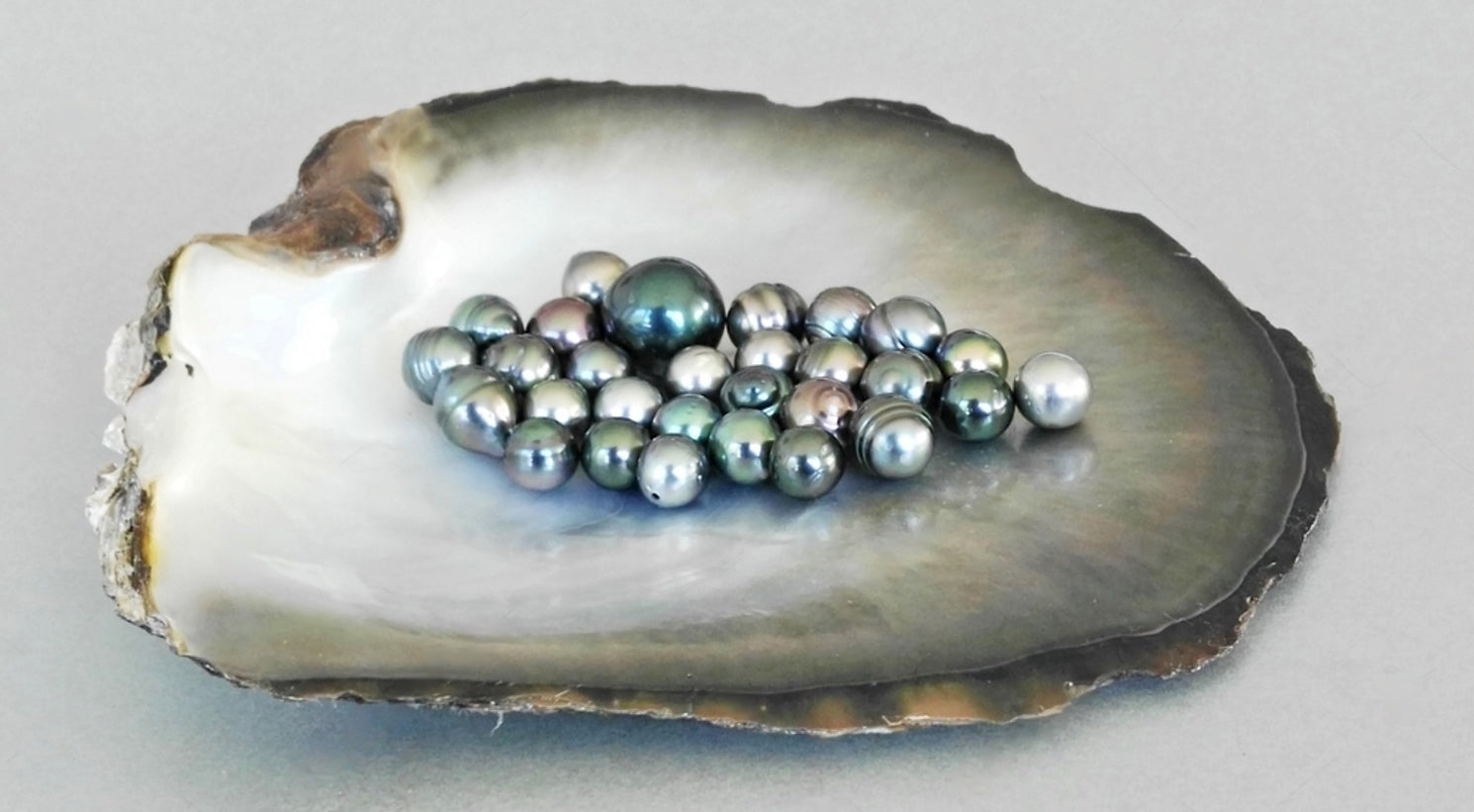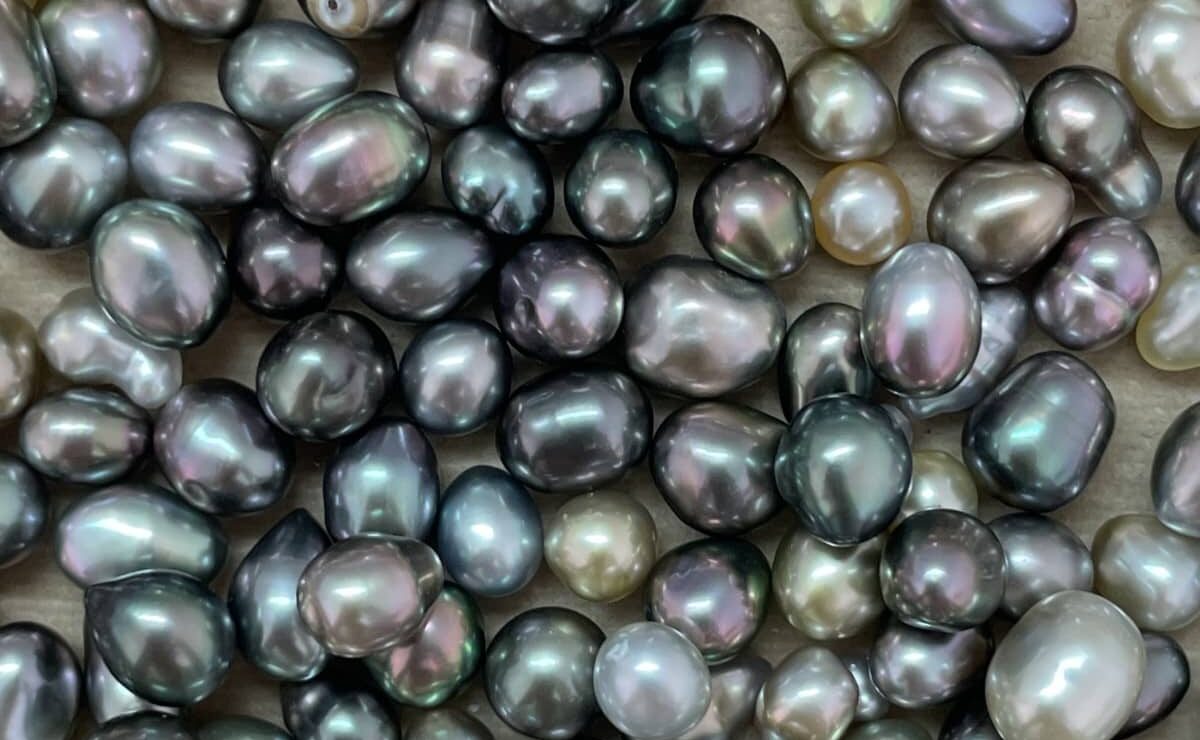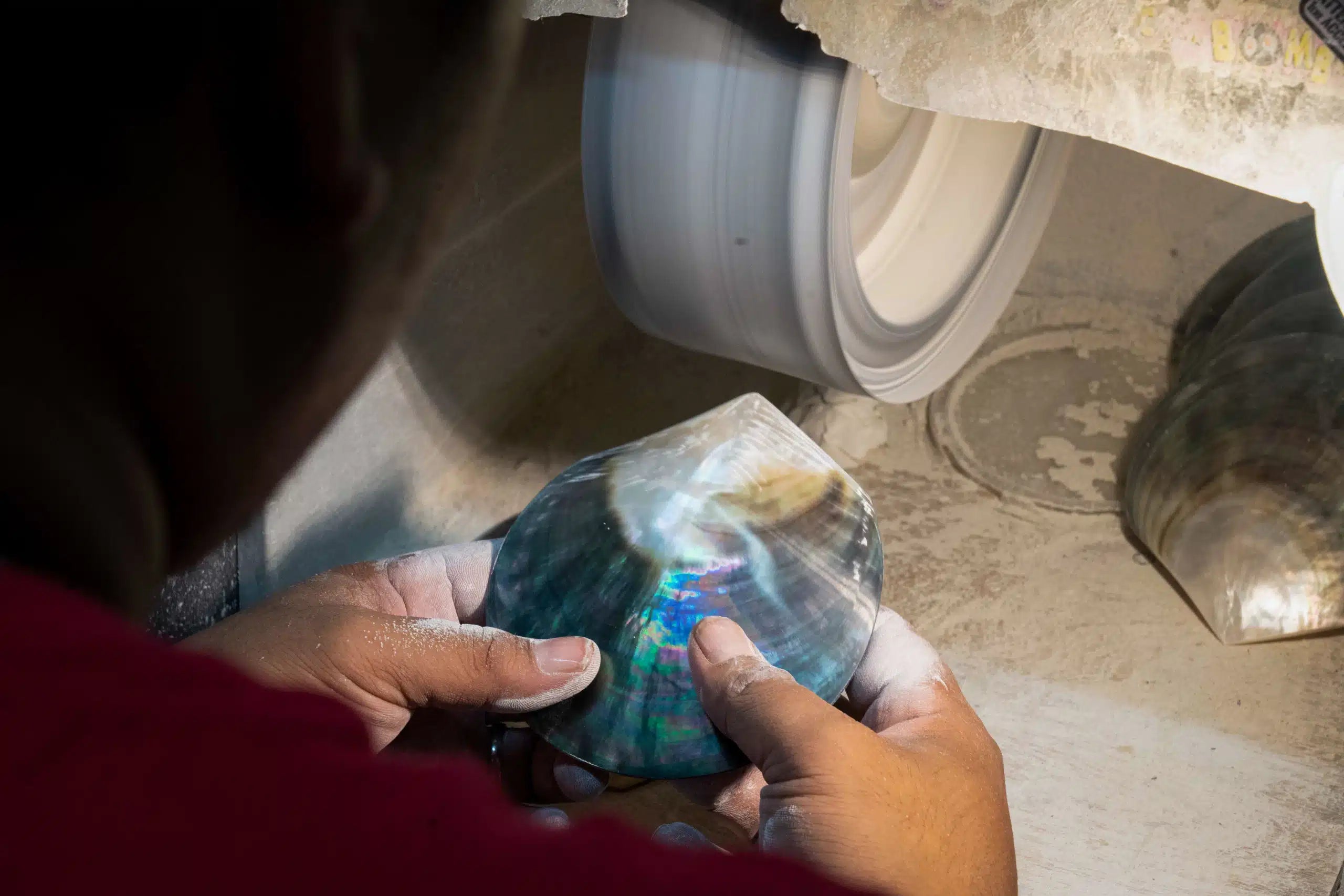UNIQUE AND FASCINATING COLORS
Tahitian pearls are marine treasures, appreciated for their beauty and timeless elegance. However, what makes them even more captivating is their variety of colors, from deep tones to light and bright hues. In this blog post, we will explore why Tahitian pearls have such a wide diversity of colors.

Natural origins
The colors of Tahitian pearls are the result of incredible natural processes. It all begins when the grafter inserts two elements inside the pearl oyster: a core (mother-of-pearl ball) and a graft (a piece of the oyster's mantle). To protect itself from the nucleus, the oyster creates layers of nacre around it. This mother-of-pearl serves as a support for the color, and it reacts to light in a unique way, which defines the color of the pearl.
The influence of mother-of-pearl
The amount of nacre deposited on the pearl as it grows is essential in determining its color. More mother-of-pearl creates darker pearls, while less mother-of-pearl leads to lighter shades. Mother-of-pearl can vary in thickness and quality, which also influences the color and luster of the pearl.
Natural variability
Each pearl oyster is unique, which means that each Tahitian pearl is different. Variations in the oyster's metabolism, environment, and other natural factors lead to distinct colors.
The Polynesian environment
The location where Tahitian pearls are grown plays a crucial role in their color. The mineral-rich waters of French Polynesia influence the chemical composition of the water where pearl oysters grow. These natural elements add a unique dimension to the color of the pearls. 
Paradiso Necklace - Maison Valencourt, Photography by Kim Akrich
The next time you admire a Tahitian pearl, remember that its color is the result of a complex, natural and mysterious process. Each pearl is a work of nature's art, with its own story to tell.



